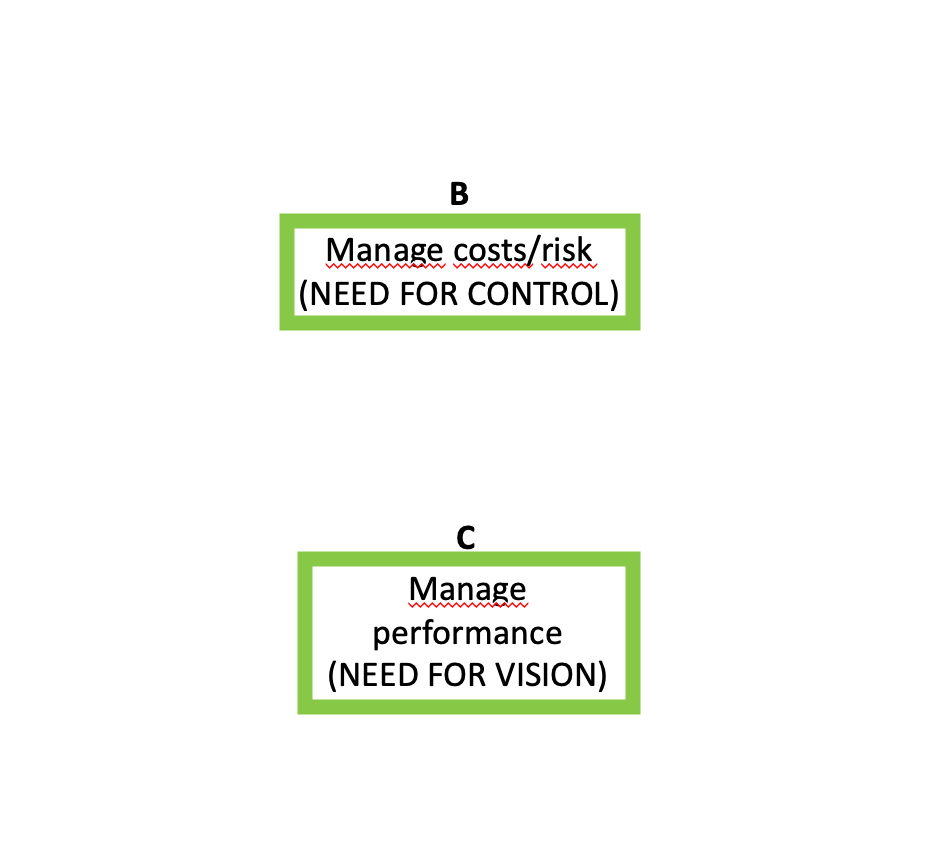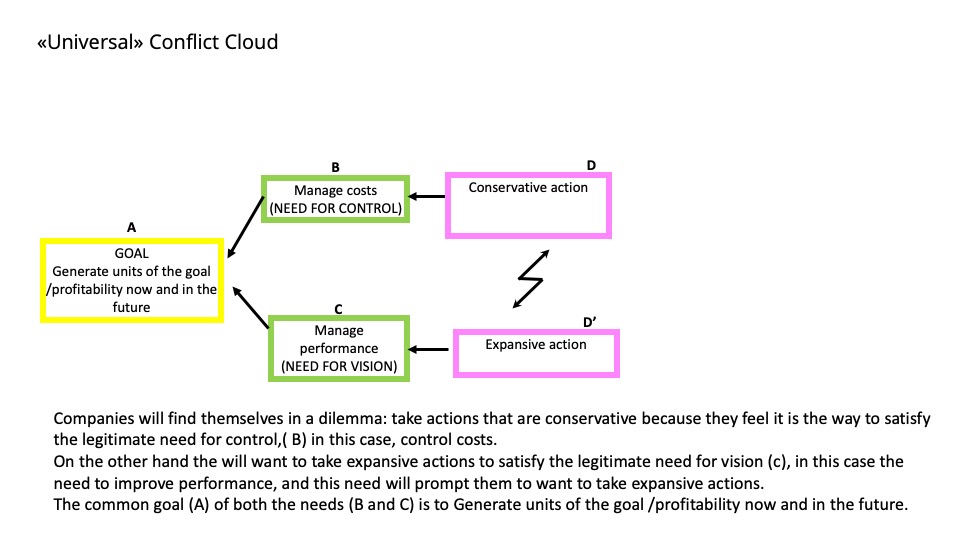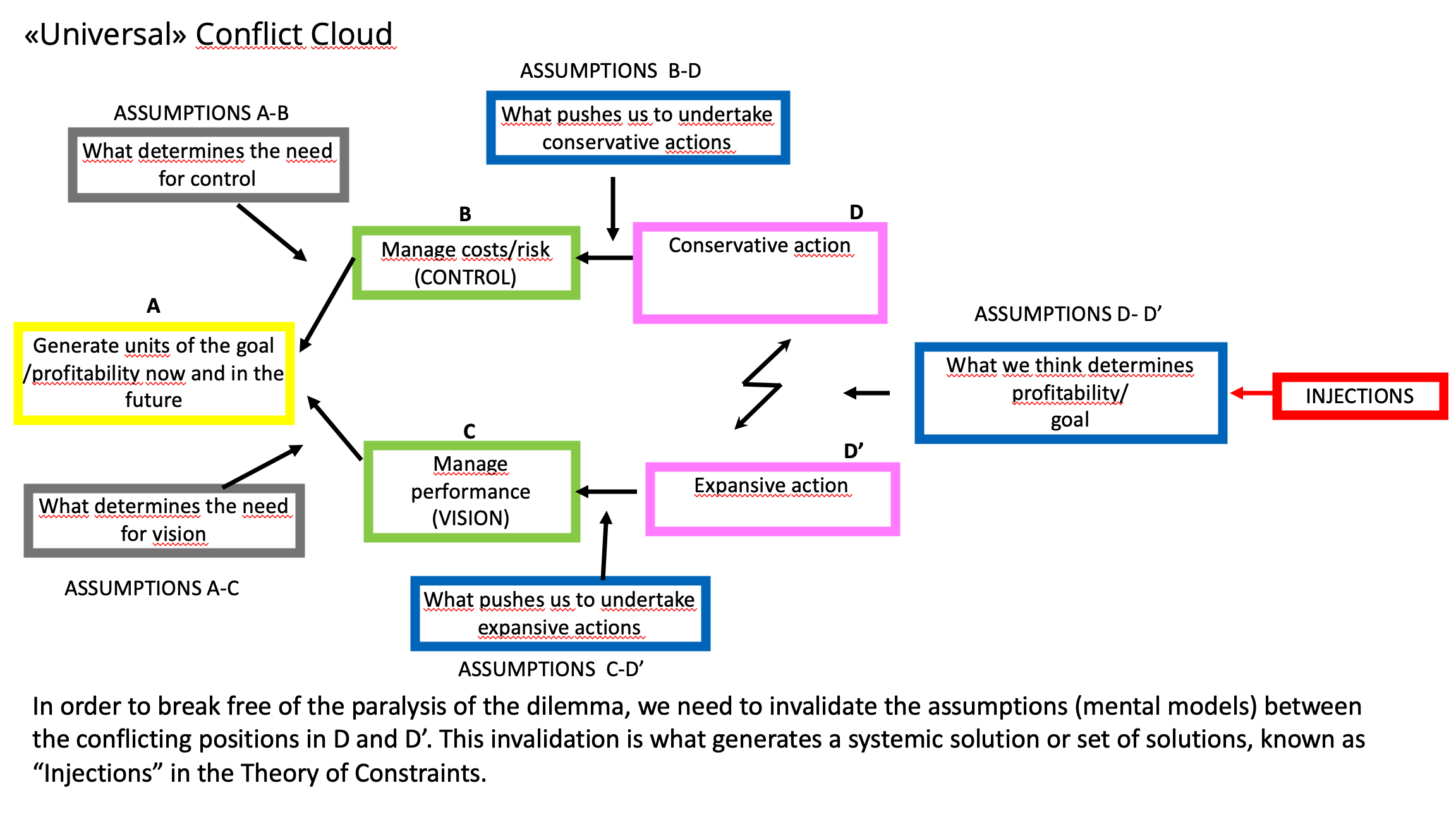In all our human activities, we are influenced by two “drivers”: one is connected with fear (control, limitation) and one with desire (vision, growth, expansion). That’s the way we are wired as humans. In a moment of crisis, it is natural that fear is very present, but no organization can afford to focus on fear alone.
These two legitimate needs of fear and vision have to live together, but we must be aware that they can prompt us to want to take actions that go in seemingly conflicting directions. When fear and vision pull us in two opposing directions and we don’t have a way to address the resulting conflict or dilemma, it can lead to a situation of blockage, or worse, paralysis.
Fear and vision, crisis and sustainability
Let’s take a look at a dilemma that many companies will be facing regarding their sustainability as a result of the current crisis. We will illustrate it as a “universal” dilemma that reflects the situation of blockage that many companies may be facing today.
The need that is connected with “control” and that may well express itself as fear or a drive to limit risk in some way and the need connected with “vision” and the desire for growth and expansion are ever-present but rarely verbalized as such. Why is it of vital importance to identify these needs and how they manifest themselves in given situations? Because a) they delimit a realistic goal for the organization to achieve and b) they will determine positions adopted within the company that may lead to a situation of blockage.
The Conflict Cloud, one of the Thinking Processes from the Theory of Constraints provides us with a way to make these needs evident and find a path to ensure they are always satisfied in the company’s efforts to achieve its goal. If we think of a “universally applicable” conflict for moving out of the crisis, we can verbalize these two needs, referred to as B and C, as:

These needs will inherently push in two opposing directions. On the one hand, the need to manage costs will push towards ”conservative actions”, whereas the need to manage performance will push towards “expansive action”. Both needs have the common goal of “Generating units of the goal/profitability now and in the future”.

Once we have identified the situation of blockage, the conflict cloud gives us the opportunity to understand why this blockage exists in the first place. What is that keeps us stuck? It is the set of assumptions, or mental models, that connect the elements of the conflict together like a collective tissue and keep it alive. We can think of these assumptions in terms of latent thoughts that have never been verbalized but that exist and influence our behavior as an organization. Only by verbalizing these assumptions and “surfacing” them can we challenge them.

Challenging our assumptions is the royal road to moving beyond a situation of blockage and emerging with the kind of breakthrough, systemic solution that can help to move us out of the crisis. In the Theory of Constraints this kind of solution is called an “Injection”.

Seeing the whole system
In over 20 years of working with organizations in all kinds of sectors, what has emerged loud and clear is that the set of assumptions that keep the organization stuck in the dilemma between conservative and expansive actions can be overcome by identifying a set of actions that shift the organization towards understanding itself as a whole system, with one goal and one, strategic constraint, and managing the variation that affects all the processes and interdependencies that allow the system to operate, including the thought processes. In other words, escaping this dilemma invariably revolves around:
a) reorganizing for accelerated flow (identify constraint and reduce variation within a coherent organization design we call the Network of Projects
b) increasing our ability to see the cause and effect relationships that make this reorganization possible. This means increasing our ability to “think complexity”, ie see interdependencies and not discrete parts.
The shift in understanding to a systems view of the world is the challenge facing leaders in every sphere. The re is no time to lose in embracing a new kind of science for sustainable prosperity.






LEARN MORE